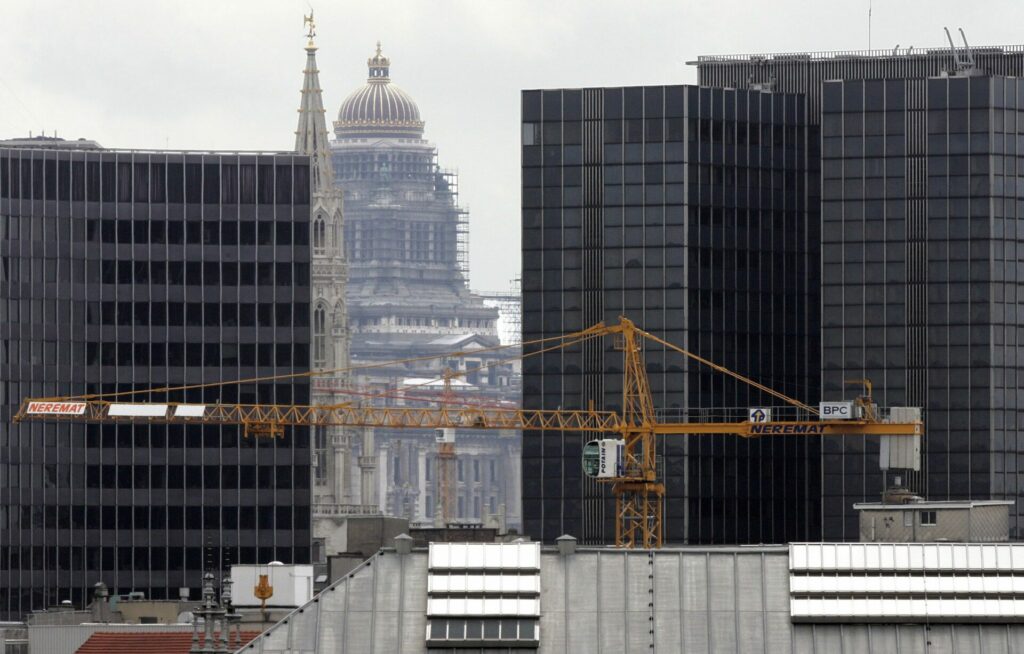More than half a century on from a failed vision to turn the Northern District of Brussels into Belgium's answer to Manhattan, the area is struggling to shed its reputation as a concrete jungle.
While some are driving forward with plans to revitalise the area, others fear that history is repeating itself.
New York state of mind
During the economic boom of the 1960s and 70s, Brussels had grand visions to create its own Manhattan skyline. Plans to turn the Northern District into a bustling business hub (the "Manhattan District") began with evicting at least 11,000 residents as homes and low-rise buildings were bulldozed to make way for more than 50 office towers crammed into 53 hectares.
But the futuristic visions of soaring skyscrapers on raised foundations and motorways running beneath pedestrians' feet faded as the oil crisis in 1973 hit and investment dried up.
Some parts of the plan were realised. Three of eight planned World Trade Centre towers were built and many office blocks in the area exist to this day. However, the Northern District has struggled to cast off its reputation as a grey concrete jungle that is soulless outside of working hours.
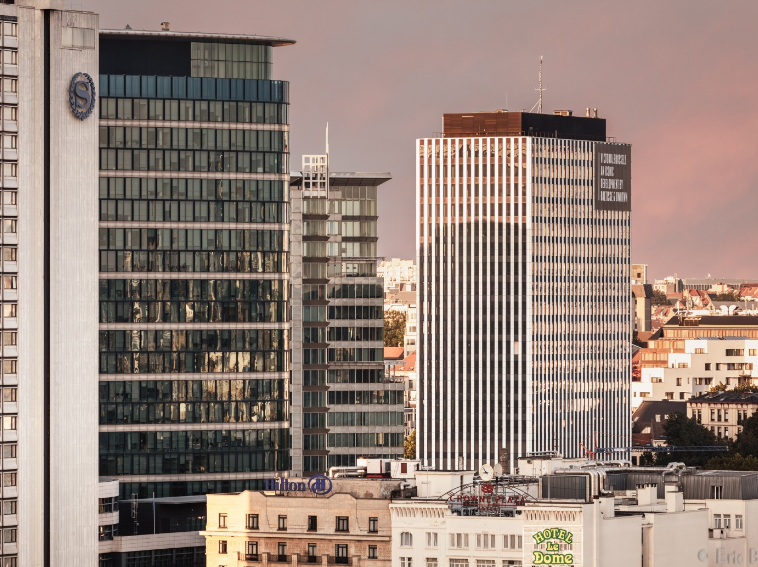
The Victoria Tower in Brussels. Credit: 51N4E
Better planning safeguards?
One outcome of the Manhattan flop was the realisation that the planning process must include local residents, and avoid what has been coined 'Brusselization': a laissez-faire approach to urban development where high-rise buildings are inserted into neighbourhoods without considering their impact.
Nowadays, development projects are subject to a 30-day public inquiry, where anyone can view planning documents and submit their opinion. A Consultation Committee allows citizens to voice their opinions about different developments.
To address haphazard developments in Brussels, Bral and Inter-Environment Brussels (IEB) were created – two associations that for fifty years have represented the voices of local residents in planning decisions.
Challenges for citizen associations
Speaking to The Brussels Times, both Bral and IEB say that avenues for citizens to participate in the planning process are not perfect, and it still sometimes feels like developers and local authorities are working without much outside input.
Benjamin Delori from Bral criticises the 30-day window for public inquiries, saying this is too short for any single resident to review the mountain of documents that concern major projects.
"We're drowning in the amount of projects, we can't follow them all. How can we ask [citizens] to follow and keep up to date with what's happening? Urbanism is not very tangible from one day to the next, and then when the works start it is too late."
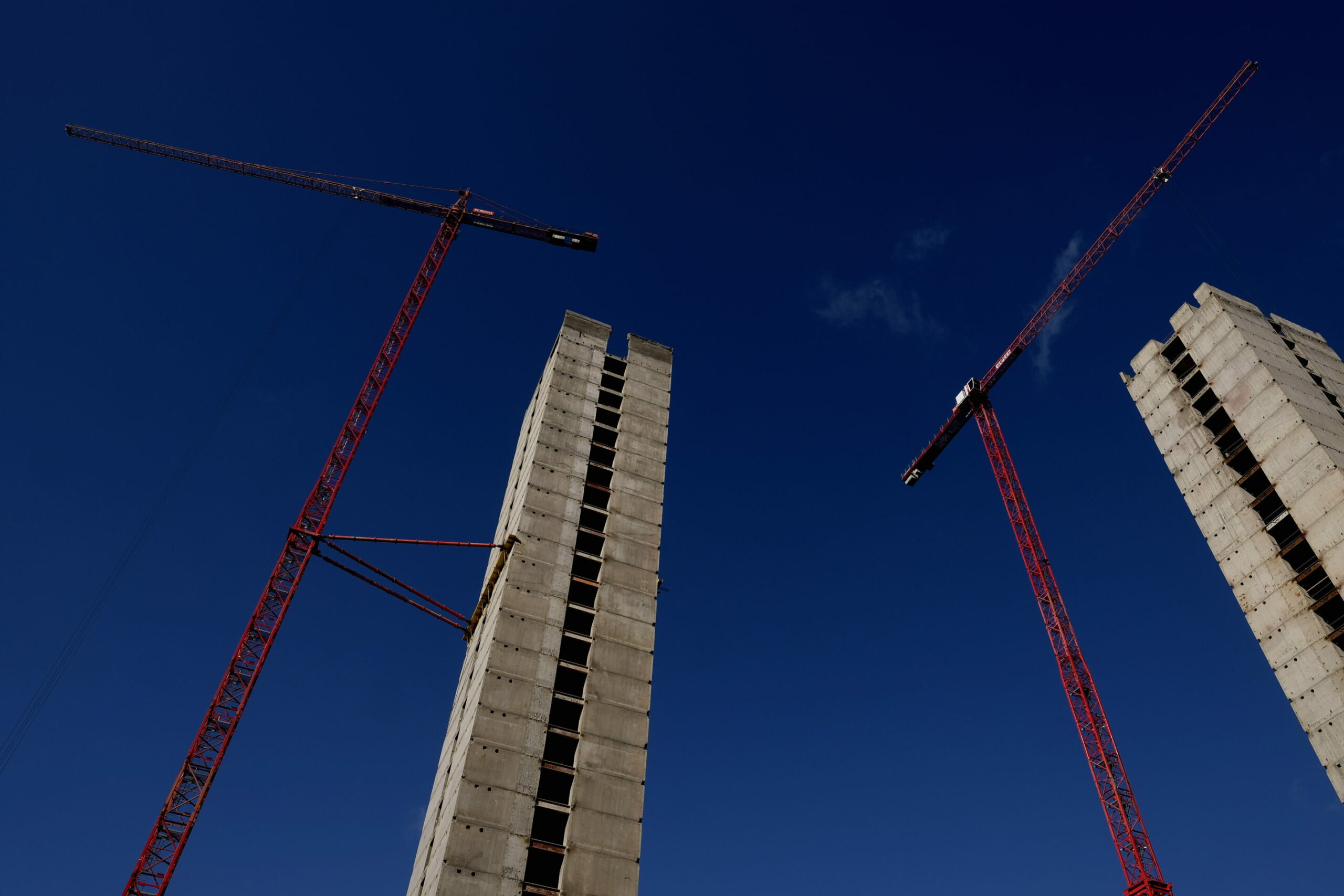
Cranes next to the dismantled WTC towers in the Noordwijk - Quartier Nord district in Brussels, Friday 26 February 2021. Credit: Belga / Eric Lalmand
He adds that Bral has legally challenged some developments but that developers have pushed ahead with the project whilst a decision was pending. For example the One tower in the European Quarter was built on the basis of planning permission that has subsequently been annulled.
Delori describes a situation in which developers and local government seem to be "working together" to align projects with development plans. Citizen associations like theirs are seen as a "major nuisance" in this dynamic. He highlights that Bral used to receive funding from the Brussels-Capital Region, but subsidies were stopped in 2023.
"They don't see us as useful but the last 50 years have shown how important not-for-profits like us have been in ensuring citizens are involved and informed about what's going on. Unfortunately, given the next government will be way less progressive than the past one, tough times are ahead for city planning in Brussels."
A new direction
Last year, the Brussels-Capital Region began implementing a plan to reverse the mistakes of the Manhattan vision.
The regional government hopes to reinvigorate the area with a focus on mixed-use developments rather than just offices. This involves creating housing, public spaces with plants and trees, commercial and catering establishments as well as public facilities.
The city is looking to encourage more residents to move to the area and make it more vibrant. Many projects have lately been approved, including new parks and cultural centres, as well as metro line 3.
Real estate companies operating in the area have also formed Up4North, an association that campaigns to revive the Northern District. They have even rebranded the area to 'BXNord': "the new place to be for the young, bold and creative Europeans".
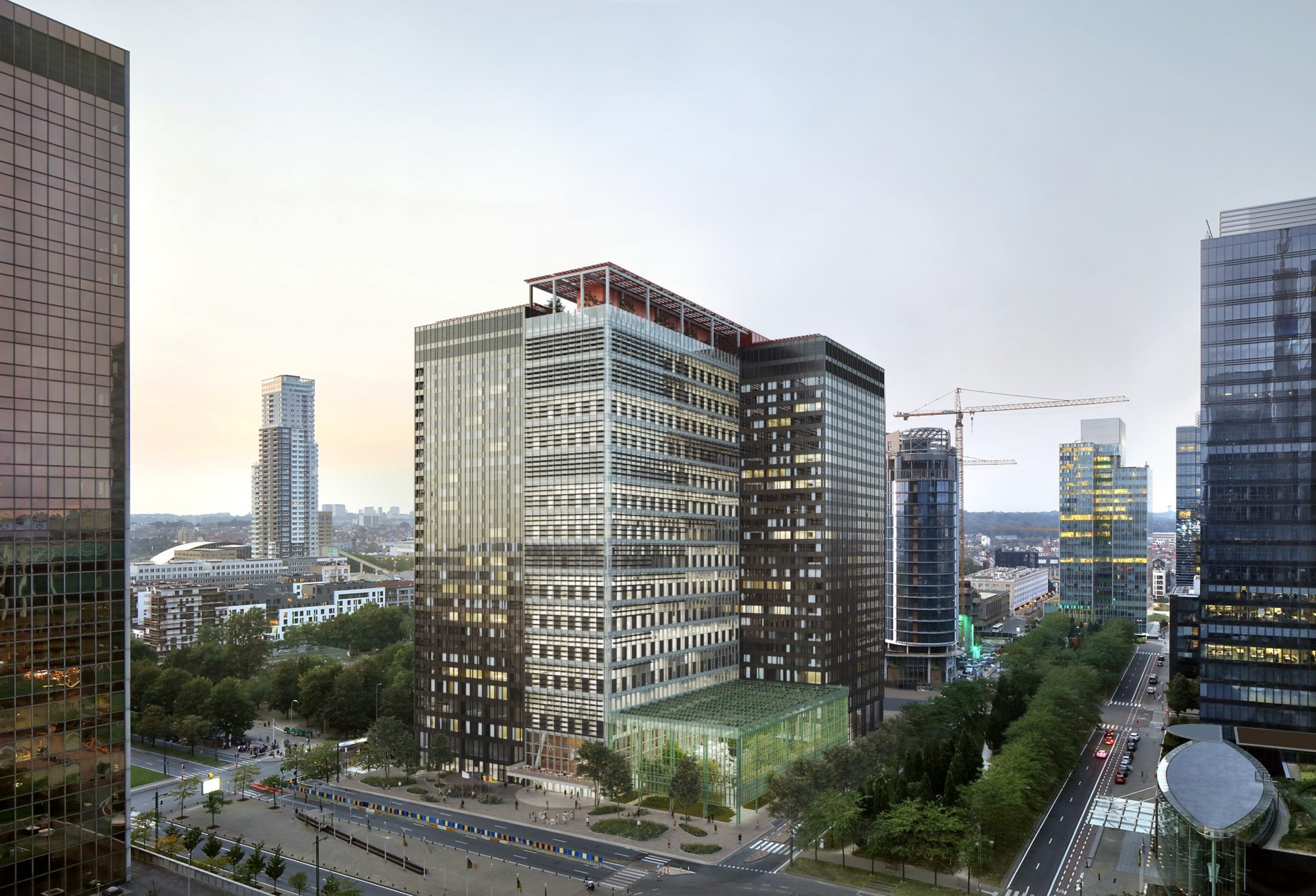
The ZIN project. Credit: Befimmo
Life beyond business
A flagship project in the area is the ZIN building, which has been built on the site of two of the former World Trade Centre towers from the Manhattan era.
Developer Befimmo has invested €464 million in the ZIN, which spans 110,000 square metres. As well as 70,000 square metres of office space this comprises 25,000 square metres of residential space and 25,000 square metres dedicated to a hotel.
Speaking to The Brussels Times at the foot of the building, in a greenhouse space with room for three food vendors, Befimmo CEO Jean-Philip Vroninks agrees on the need for multi-purpose spaces. "There is no appeal anymore to have a mono-usage office environment. You need a mix, we're now the first to do it but all the projects that are ongoing here have the same ambition. I think it will take another five years to really feel the difference, but the first big stone has been laid."
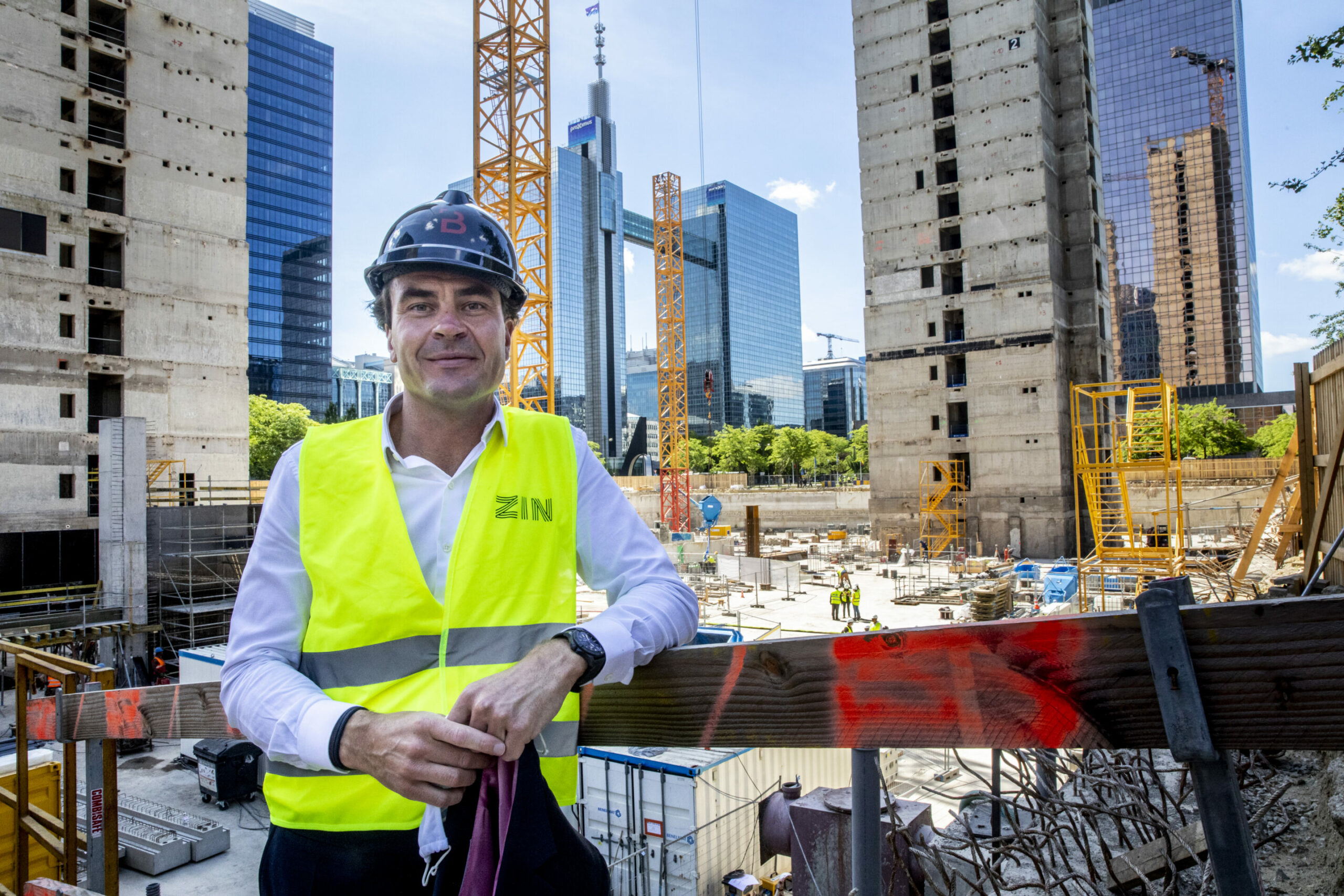
Jean-Philip Vroninks CEO of Befimmo at the first concrete casting of the ZIN project. Credit: Belga / Hatim Kaghat
In an effort to boost housing stock in the city centre, the outgoing Brussels government proposed that big residential developments like those in the Northern District should have 25% of space dedicated to social housing. While it is unclear whether this policy will be continued by the next government, Vroninks warned that such a measure risks preventing private development.
"In my view, 25% of social housing in a project, that's a lot. In the current market you risk completely stopping every development because nobody will develop a project if you know beforehand that you will lose money. I don't think the private sector should be responsible for providing so much social housing, that's really for the public sector to do."
Vroninks conceded that a lower percentage might be more feasible and acknowledged the need to respect the rights of citizens whilst renewing the Northern District. But he feels that so far, development projects have been in consultation with a large part of the local community. "Their objections have been relatively limited, almost none," he said.
He added that some of the objections come from "associations or interest groups that don't even live here". "The criticism isn't always objective," he concludes.
'Harsh reality' of city development
But while everyone agrees on the need for more diversity and mixed-use buildings in the Northern District, it shouldn't come in the form of more high-rise office buildings, says Martin Rosenfeld from citizen association IEB.
"We already have too many offices so let's stop building them. Let's make places where people want to live, with schools, public spaces, and lower buildings. The neighbourhood needs to balance the excess of offices. If you continue to build 50% offices and 50% something else, you still have a lot of new offices. At this rate, we'll never create a place where people actually want to live."
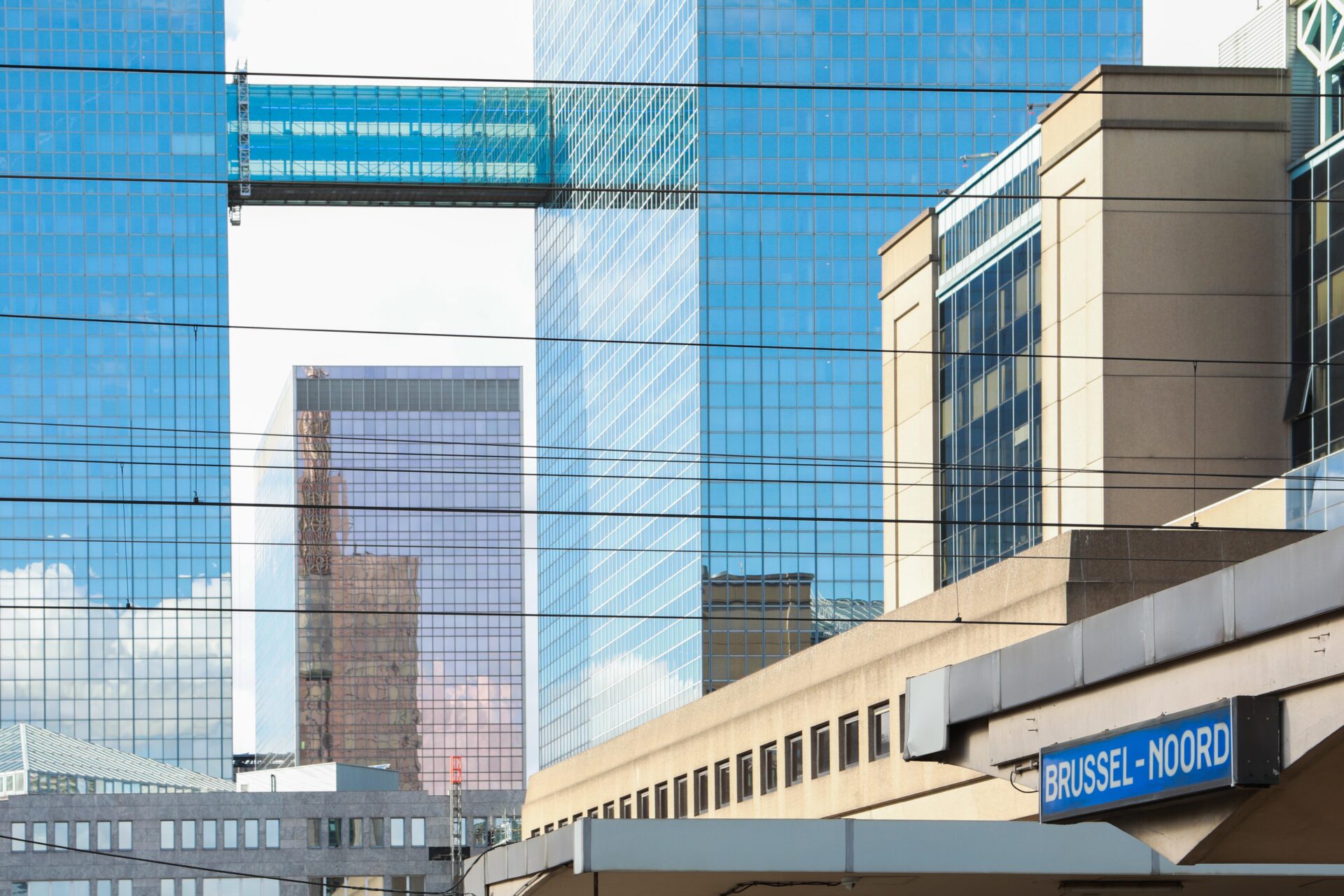
Northern Quarter seen from Brussels North train station. Credit: Belga / Paul-Henri Verlooy
Artist Wouter De Raeve was born and raised in Brussels. He used to have a studio in one of the abandoned WTC towers in the Northern District. When developers and politicians arrived in 2017 with fresh momentum to redevelop the area, he said the "soap opera" drama inspired two films, 'WTC: A Love Story', and 'WTC: A never-ending Love Story', which he co-directed with Lietje Bauwens.
"We saw right in front of our eyes all these actors that are involved, such as architects, developers, politicians, activists... we all saw them getting involved in the evolution of the Northern Quarter."
He says that plans to revive the Northern District, like a lot of other redeveloped neighbourhoods in cities across the globe, will likely be successful in attracting people to live there. But they will be a "different type of people than those already in that area".
"The mixed housing, shops and restaurants, and hotel functions they talk about will attract a much more affluent population that can pay for a €4 coffee. Many people living in social housing or the existing population are being totally neglected or being pushed aside, or being looked upon as problematic," he said.
"This is the harsh reality of a city, and what's so emblematic in the Northern District is that all of these elements are present."

